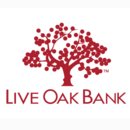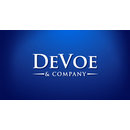Mary Ann’s notes: Some years ago, I had the pleasure of working with Bruce Yates at Pacific West Financial where Bruce was an advisor. Below is an updated version of a previous interview.
Bio: Years in the Securities Business: 33
Personal: Bruce is a world-traveled avid scuba diver and an accomplished underwater photographer. See his breathtaking photography on his website: www.UnderwaterReflections.com
Bruce started in the securities business in 1979 with Merrill Lynch, and then moved to Shearson/American Express for a few years. In 1982, Bruce earned his Certified Financial Manager designation. In 1984, Bruce went independent and founded his own RIA firm, Appropriate Balance Financial Services, Inc. (www.AppropriateBalance.com).
Business Model: Appropriate Balance Financial Services, Inc. (ABFS) is a fee only independent RIA with $350 Million in assets under management (AUM). Bruce is President and Bob Pennell is a Principal and Chief Financial Strategist. They have 18 employees. Bruce specializes in management of income-oriented securities and analysis, and Bob is one of four of the firm’s other portfolio managers.
Mary Ann: Bruce, what was it like crossing over from wirehouse to independence and at the same time transitioning to a fee based business? How long did it take?
Bruce: I left Shearson and brought my secretary with me to start the firm. Over subsequent months, I hired two more Shearson people. Marhe Youch, one of the first to join me, quickly became a producer, and 28 years later remains one of the firm’s primary advisors. In fact, I feel very lucky that three of my four first employees are still with me.
The first two years, I barely made enough to pay employees, and my wife and I lived on her teaching salary. I always felt sure I was doing business the right way, although my wife kind of wondered. I started with only $10 million in AUM, but the business grew right from the beginning. Finally, at the 6-7 year mark, I was finally making about the same level as when I left Shearson. It takes a long time to build up assets under management, but I firmly believe it’s a superior business model.
MA: Bruce, you were very early going to the fee side – clear back in 1984.
B: Initially, I was creating primarily fixed income portfolios for a fee. My target clients were fixed income retirees and conservative clients. I was convinced that the entire industry would switch to the fee side within 5 years, and that I was part of a large movement. It turned out that the industry had to be dragged to the fee side over several decades. I think Wall Street delayed because the upfront cost of making the switch is so great (vs. heavily loaded products).
When brokers ask me about switching cold turkey to fee, I tell them they really need to have $20 to $25 million that they are confident will be under management fairly soon for an easier transition, or else gradually transition from commission to fee.
MA: How did your early growth phase go?
B: In the first 10 years, I got into a hyper-growth mode and took in every broker I knew who wanted to work on a fee basis, and before I knew it I’d acquired 15 employees, of which 6 or 7 produced. It was difficult for me because I became a manager of people instead of the things I loved—working with clients, speaking and writing. So at that point I made a very deliberate decision to get smaller at every opportunity. Within a couple of years, I was back to 7 total employees; I was still producing the majority of the revenues, but had far less headaches. Bigger was not necessarily better. Slow growth, carefully and profitably, was my course from then on.
MA: Did you ever cut your client list back?
B: No. I have always told my clients that as long as I was in the business, I would work with them. I would never fire or turn them over to someone else just because of asset size. The common practice where, as you get more successful, you shuffle off the smaller clients has always bothered me. Instead, I personally stopped taking new clients (where I act as their primary advisor) some years ago. I have almost half the firm’s AUM and clients as it is, so I feed referrals to the other advisors in the firm. Because our other advisors are so good, that seems to work for everyone involved.
Interestingly, I still have my very first clients: a husband and wife couple that was a Merrill Lynch cold call 33 years ago. I sold them a $5,000 Washington State Municipal, and they are still clients.
MA: When did you feel Appropriate Balance went from a practice to a business?
B: After Bob (Pennell) and I merged our firms, we changed from individual advisor-based management to our company-based management style. We should have done it earlier. For a number of years, Bob and I worked side by side, shared office space, staff and equipment, but kept our companies separate. Back then, ABFS would hire Bob to manage clients’ equity portfolios, his specialty. After several years of shared space, sound communication, complementary styles and complete trust through many business dealings, we were able to come to easy meetings of the minds, and we’ve always tried to make sure that the other was well cared for, rather than grab every penny for ourself. That’s why the merger went smoothly, almost a no-brainer. It was a logical fit, especially given my focus on income oriented securities and Bob’s focus on equities.
MA: Would you recommend collaborative work and shared office space first before a merger?
B: Of course, you do need to deal with the compliance issues in that structure, but I think it’s a great way to start, an advisable first step. An informal collaboration reveals a lot. If you are working next to someone and dealing with the day to day real world financial situations, you will find out quickly how the other person works. I’ve often said that I can tell a lot about a person’s character by playing basketball with them, such as whether they are a team player or not, and how they cope (or not) when things go wrong. Two of my co-workers, Bob and Reg, say the same thing about golf. I just feel very fortunate; everyone should be so lucky as to have a partner like Bob and associates like the ones I have.
MA: What other strategic steps did you take to move your practice to a business?
B: It became clear to Bob and me that too much of our time was spent dealing with office management issues—staff, equipment, and so on—issues we didn’t want to be involved in, but had to be. At one point during the process, a staffer brought us Michael Gerber’s book, The E-Myth Revisited, and said, “Hey, this sounds just like you guys!” It described us, and made a lot of sense. The E-Myth is the entrepreneurial myth, the idea that an entrepreneur who is a skilled technician (in our case, wealth manager) is also going to be good at running a business. We implemented many points from the book, increasing standardization. In fact, a consulting industry has arisen from this concept, and we hired several coaches who helped us implement the E-Myth approach. Part of this was to recognize that we were big enough to hire a Chief Operating Officer/Chief Compliance Officer to run the parts of the business that we didn’t want to run. As the regulations of an RIA have mushroomed, we really needed a dedicated person to deal with compliance and employee issues.
I started the firm as a one- man RIA, but I would never recommend that someone today. I think you need 6 to 12 people to justify it; otherwise, I suggest affiliating with a bigger firm that provides all of the compliance oversight (as many B-D’s do these days). The SEC has gotten tremendously more adversarial in recent years, and starting your own RIA is fraught with peril.
MA: What is your next goal?
B: Internally, we are always discussing ways in which we plan to modify and enhance our services, while individually doing the things we love to do. For example, we have considered bringing a CPA in-house. We are not sure how far and in what direction we want to grow our services. The industry is changing enough that you have to look at what you do well, and what else you need to do to keep and attract clients. It’s a bit of a “grow or die” business. You need new money coming in, as existing clients die, expenses rise and employees want financial rewards. Growth has to be part of 5-year goals, as well as longer-term plans.
This is a great business to be in. It is such a rewarding experience when clients thank you for taking care of them while their friends and family haven’t fared as well in others hands.
I have a core concept that goes back to when I was making cold calls as a new broker at Merrill Lynch. Several other reps were churning and burning clients with options, and making fun of the huge commissions they were generating through their client’s ignorance. Their financial “success” really discouraged and bothered me, until one of the older brokers said, “You have to remember that the cream rises to the top…but so does the scum. Yes, sleazy people can make a ton of money in this business, but that has nothing to do with you; it’s also possible to make a lot of money doing things the right way.” That message has always stuck with me, and it’s true.
MA: Bruce, thank you for taking the time to share your insights with me. Your core values have guided you, and your intellect and wisdom have built an admirable company, truly a success story.




